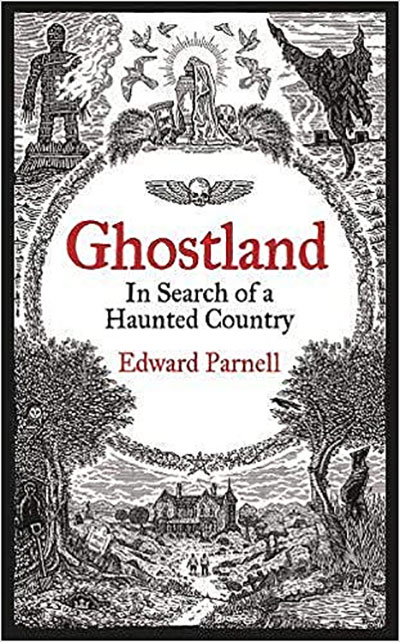
Ghostland: In Search of a Haunted Country, Edward Parnell (468pp, £16.99, William Collins)
Edward Parnell is one for dropping the reader into the middle of things. His ‘Prologue’ gives little away, is basically a two page authorial mutter about ghosts and ghost stories, which ends with a Halloween photo, before Chapter 1 arrives and we are plunged into a story about Henry James. This delayed information – starting a story without informing the reader who or what it is about – is something Parnell repeatedly does throughout the book, and it’s bloody annoying. But if you can get over that this is an interesting read about literature, film and place. Oh, and birdwatching.
The twelve chapters here each focus mostly on a geographical area in which Parnell visits sites associated with a wide number of writers who interest him. Many of them write ghost stories, but there are also children’s authors such as Susan Cooper and Alan Garner here, as well as W.G. Sebald, Ithell Colquhoun and John Buchan, as well as references to a number of films and TV shows. Many of these will be familiar to those interested in what is now called folk-horror or perhaps psychogeography, although Parnell doesn’t really explore the layers of time and memory that the latter term suggests.
Much of the book is written in a very personal manner: not only in the present, as Parnell explores the places he visits, but also woven through with birdwatching trips, family holidays and grief. For me, it’s the grief part that is unnecessary here. I wouldn’t deny anyone the space or time to grieve, but here the story of his parents’ and brother’s prolonged illnesses and deaths sit uneasily within the text. There are obviously links between death and ghost stories, and many of the anecdotes about family trips and childhood memories are apt and amusing, but the eventual slow demise of his relatives seems inappropriate here, unlike the bird-spotting, which adds a new layer to his stories, as does the liberal sprinkling of photos and illustrations throughout.
So what exactly does Parnell do in Ghostland? Well, he noses around writers’ houses (outside and inside), the villages, towns or other locations they lived in or used as settings for their stories and films, gives us some biographical and geographical details, some strange coincidences and associations, some narrative summaries, some literary and social context, and then moves on. It shouldn’t work but it does. It’s well-shaped and written, coherent and intriguing, with a real breadth to its concerns. If the Alan Garner chapter is anything to go on, it probably doesn’t offer much new information to an informed reader of any one author or text, but I suspect said informed reader simply won’t know about everything discussed here.
I’m not, for instance, very interested in ghost stories: the work of Algernon Blackwood, Arthur Machen and M.R. James leaves me cold. But I am a fan of the Green Knowe stories, of Susan Cooper and Alan Garner, Sebald and of the novel Waterland; and I also enjoy watching Penda’s Fen, Quatermass, The Wicker Man and Derek Jarman’s films, all of which find their way into this sprawling and engaging work. I’m still not very sure about what Parnell means by haunted here, but maybe that’s deliberate? Is it the haunting of (literary) ghosts, of his personal past, of how places have effected, informed and inspired the work of authors, or just Britain’s hidden history? Whichever it is – and it may be Parnell wants all of those in the mix – Ghostland is an informed and informative, enjoyable read.
.
Rupert Loydell
